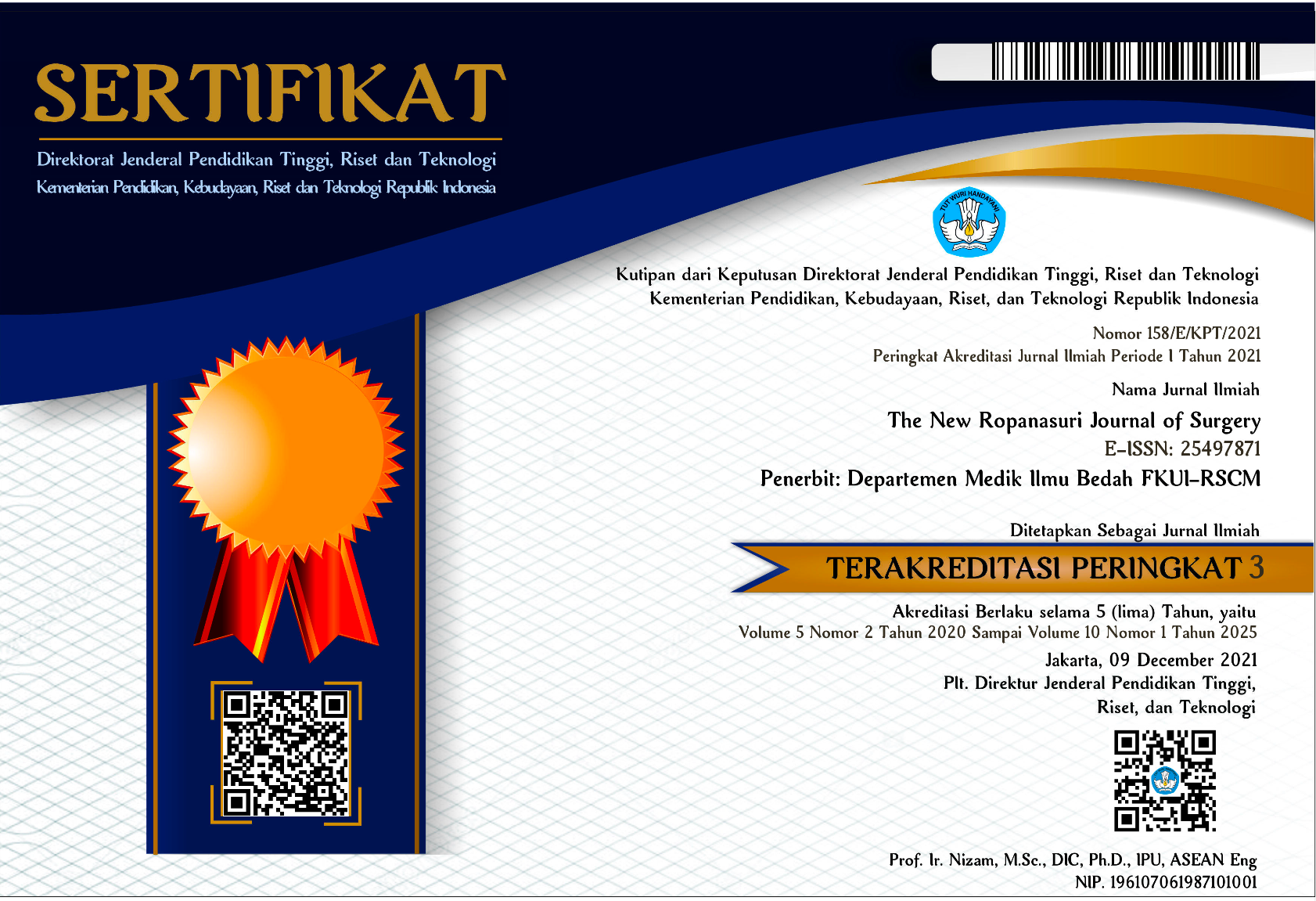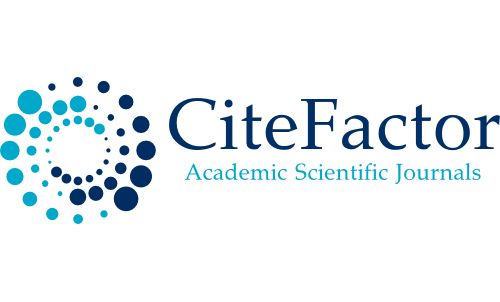Abstract
Introduction. Data of complicated intraabdominal infections (cIAI) and the epidemiology of causative microorganisms which is Indonesian characteristics is required to develop a guideline. Thus, a preliminary study run to find out such characteristics. Method. Data of subjects with cIAI managed in six centers of teaching hospital in Indonesia in period of 2015–2016 were collected. Those data of source of infection, the epidemiology of microorganism and susceptibility of antibiotics were descriptively provided. Results. Source of infection were perforated appendicitis (26.64%), perforated gastric and duodenal ulcer (22.70%), small bowel perforation (11.84%), large bowel perforation (13.16%), postoperative (9.54%), and others (16.2%). Escherichia coli and Klebsiella pneumonia were the most microorganisms found in the pus specimen. The sensitivity of Escherichia coli and Klebsiella pneumonia to cephalosporins were in range of 14.1– 42% and 28.7–35.6%, respectively. Conclusion. Perforated appendicitis, perforated gastric and duodenal ulcer, small bowel perforation, large bowel perforation, and postoperative in sequent are the main causal of cIAIin Indonesia. The epidemiology predominated by Gram negative, particularly Escherichia coli and Klebsiella pneumonia.
Recommended Citation
Moenadjat, Yefta; Lalisang, Toar JM.; Saunar, Rofy S.; Usman, Nurhayat; Handaya, Adeodatus Y.; Iswanto, J.; Nasution, Safruddin; Karuniawati, Anis; Loho, Tony; and Widyahening, Indah S.
(2017)
"Epidemiology of Microorganisms in intraabdominal infection/complicated intraabdominal infections in six centers of surgical care in Indonesia: A preliminary study,"
The New Ropanasuri Journal of Surgery: Vol. 2:
No.
2, Article 4.
DOI: 10.7454/nrjs.v2i2.35
Available at:
https://scholarhub.ui.ac.id/nrjs/vol2/iss2/4













